Research Professionals @ Monash Professional Development Awards
Congratulations to Hemayet Uddin, our MCN senior process engineer and academic coordinator, for winning the Monash Professional Development Award. Hemayet’s exceptional achievement stands out among the 8 winners selected from within Monash. His dedication and hard work are truly commendable, and his contributions to the team and the field of process engineering are greatly appreciated. As part of this award, Hemayet had the opportunity to visit Santa Barbara, California, USA from July 11th to 19th, 2023, where he attended a course on Atomic Force Microscopy (AFM) advanced electrical measurements applications at the prestigious Bruker Nano Surfaces & Metrology. Well done, Hemayet, on this remarkable accomplishment!
Hemayet (Fourth from the left ) at the Bruker Nano Surfaces and Metrology facility, Santa Barbara, USA.
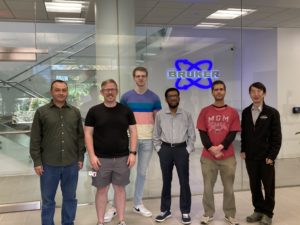
Nanofabulous Seminar: DNA origami for biotechnological applications
DNA origami has enabled the construction of DNA nanostructures with unprecedented structural control over size, shape and surface functionality. Using one long strand of ssDNA, and hundreds of short DNA oligos, user-defined complex structures can be formed via sequence-dependent self-assembly in a one-pot annealing reaction. Shapes such as cubes, bricks, cylinders and triangles can be formed, all the way to programmed higher ordered assemblies, molecular rotors, transport pores, and logic gates. Importantly, DNA origami objects are proving to be useful tools in an array of applications such as sensing, nanoplasmonics, nanophotonics and drug delivery.[1]
In this seminar, recent work in the development of DNA origami for biotechnological applications will be discussed. First, the use of functionalised DNA origami shells for virus trapping and neutralisation will be presented. Where, upon binding to the interior of the DNA shells, the viruses are blocked from undergoing interactions with host cells.[2, 3] Secondly, recent results demonstrating the genetic encoding of DNA origami for mammalian gene expression will be discussed.[4, 5]
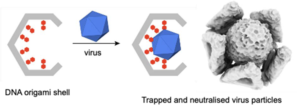
References
[1] P. Wang, et al., Chem, 2017, 2 (3), 359–382.
[2] C. Sigl, et al., Nat. Mater., 2021, 20 (9), 1281–1289.
[3] A. Monferrer*, J. A. Kretzmann*, et al., ACS Nano, 2022, 16 (12), 20002 – 2009.
[4] J. A. Kretzmann, et al., Nat. Commun., 2023, 14 (1), 1017.
[5] A. Liedl, et al., J. Am. Chem. Soc., 2023, 145 (9), 4946 – 4950.
Dr Jessica A. Kretzmann
Forrest Fellow, School of Molecular Sciences
The University of Western Australia, Crawley, WA, Australia
11:00am, 21/09/2023
Melbourne Centre for Nanofabrication Boardroom
151 Wellington Road, Clayton, 3168
Zoom link: click here
Meeting ID: 821 4587 5296 and passcode: 551496
Click here for more information
Nanofabulous Seminar: Focused Ion Beam machining of 3D quantum materials
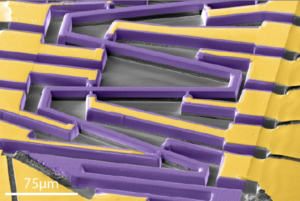
New materials will play a key role in technologies that address our current challenges. In electronics, both classical beyond-silicon as well as quantum coherent computing have a strong materials dimension. At the same time, obtaining crystalline micro- and nano-devices from chemically complex materials for prototyping is a sizable challenge.
Our research group tackles this by driving focused ion beam (FIB) based methods to carve such 3D microscopic circuits from as-grown crystals and powders of complex matter. We pursue both the basic physics of these materials, with an emphasis on superconductivity, density waves, topological transport and strongly correlated electron systems; as well as investigate the role of confined 3D geometries on the unconventional states they host. Quantum transport is the main tool to characterize the device properties in high magnetic fields and at mK temperatures. The key features of this method are presented, with its capabilities and limitations, and a few examples are reviewed.
Prof Philip Moll
Director, The Max-Planck Institute for the Structure and Dynamics of Solids
Hamburg, Germany
4:30pm, 14/09/2023
Melbourne Centre for Nanofabrication
151 Wellington Road, Clayton, 3168
Zoom link: click here
Meeting ID: 860 4541 7242 and passcode: 998923
Click here for more information
Nanofabulous Seminar: Semiconductor Nanostructures for Optoelectronics Applications
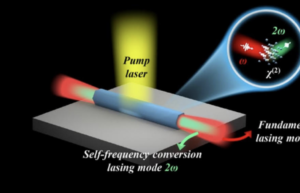
Semiconductors have played an important role in the development of information and communications technology, solar cells, solid state lighting. Nanowires are considered as building blocks for the next generation electronics and optoelectronics.
In this talk, I will present the results on growth of nanowires, nanomembranes and microrings and their optical properties. Then I will discuss theoretical design and experimental results on optoelectronic devices. In particular I will discuss nanowire and micro-ring lasers and integration of nanowires and microrings. I will also present the results on polarization sensitive, broad bandwidth THz detectors operating at room temperature. Nanowire based energy devices such as solar cells and photoelectrochemical (PEC) water splitting will be discussed. I will discuss about Neuro-electrodes to study brain signaling to understand dementia. Future prospects of the semiconductor nanostructures will be discussed.
Prof Chennupati Jagadish
ARC Centre of Excellence on TMOS
Research School of Physics, The Australian National University
11:00am, 07/09/2023
Melbourne Centre for Nanofabrication
151 Wellington Road, Clayton, 3168
Zoom link: click here
Meeting ID: 827 8633 2548 and passcode: 344157
Click here for more information
Nanofabulous Seminar: A Bioelectronic Platform for Rapid Detection of COVID-19 and More
COVID-19 pandemic has highlighted the need for rapid and sensitive protein detection and quantification in simple and robust formats for widespread point-of-care applications. We here introduce a modular nanobody-functionalized organic electrochemical transistors (OECT) architecture that enables rapid quantification of single-molecule-to-nanomolar levels of specific antigens in complex bodily fluids. The sensors combine a new solution-processable organic semiconductor material in the transistor channel and the high-density and orientation-controlled bioconjugation of nanobody–SpyCatcher fusion proteins on disposable gate electrodes. They provide results after 10-min of exposure to 5 μL of unprocessed samples, maintain high specificity and single-molecule sensitivity in human saliva and serum, and can be reprogrammed to detect any protein antigen for which nanobodies exist. We demonstrate the use of this highly modular platform to detect green fluorescent protein (GFP), SARS-CoV-2 and MERS-CoV spike proteins, and for the COVID-19 screening of unprocessed clinical nasopharyngeal swab and saliva samples with a wide range of viral loads. The speed, performance and versatility of our nanobody-functionalized OECT, and its compatibility with many sample types, suggest that this biosensor technology can complement or replace a wide range of clinical and non-clinical diagnostic assays for serious diseases including but not limited to COVID-19.
A/Prof Keying Guo
Biotechnology and Food Engineering
Guangdong Technion-Israel Institute of Technology (GTIIT)
Adjunct Associate Professor (Research), MIPS, Monash University
11:00am, 15/08/2023
Melbourne Centre for Nanofabrication Boardroom
151 Wellington Road, Clayton, 3168
Zoom link: click here
Meeting ID: 868 4122 8148 and passcode: 780010
Click here for more information
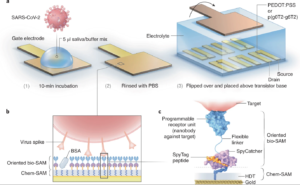
Adjustments to MCN access fees
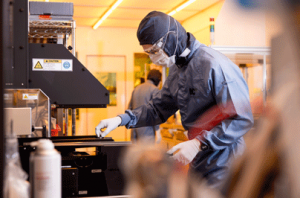
MCN’s operating costs have risen significantly in the last 5-6 years while the cost of access has remained essentially fixed. Rates are in fact cheaper today than they were back in 2017 as a result of a promotional discount scheme that was later fixed in place. These prices are no longer sustainable in the face of rising utilities and the inflated cost of goods/services that we’re seeing worldwide. As such, commencing with the August billing cycle, MCN instrument rates increase by approximately 20%, bringing us back in line with 2017 levels. The expectation going forward will be that regular adjustments are made in tandem with relevant economic factors — see revised pricing policy here for details.
Nanofabulous Seminar: Stories of the Hot and Small: Nanofabricated Tools for Thermal Measurements
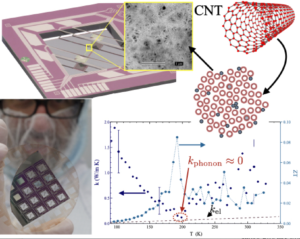
Management of heat is increasingly important in advancing technology, and is particularly critical for nanoelectronics and green energy. Desire to reduce heating or use unwanted heat to generate useful work continues to drive research into materials for heat management and thermoelectric systems that convert waste heat to electricity. Nanoscale engineering of these materials bring both tremendous promise and serious fundamental measurement challenges.
In this talk I will motivate these challenges, and show how unique approaches using micro- and nanomachining can produce tools capable of probing fundamental thermal physics and materials properties of thin films and nanostructures. Growth and patterning of thin silicon-nitride membranes are central to our approach to measuring nanoscale thermal properties. I will overview fabrication techniques for these suspended structures, and give examples and key results ranging from carbon nanotube networks for energy harvesting, to pure spin currents in metallic nanostructures, to surprisingly suppressed heat conductivity in thin gold and copper films.
Prof Barry L. Zink
Department of Physics and Astronomy
University of Denver, Denver, USA
09:00am, 11/07/2023
Melbourne Centre for Nanofabrication Boardroom
151 Wellington Road, Clayton, 3168
Zoom link: click here
Meeting ID: 838 2539 1251 and passcode: 289903
Click here for more information
Nanofabulous Seminar: 2μm PμSL Based 3D Printing and its’ application in Microfluidics, Microneedles, Biomimetics, Metamaterial, Micromechanics, etc.
Donald Chen
Boston Micro Fabrication
Maynard, MA 01754, United States
The trend towards miniaturization is occurring in more and more types of products and technologies, especially medical devices, flexible electronics, biomimetics, robotics, metamaterials, etc. Traditional manufacturing technologies face greater challenges in producing parts that are smaller in size but more complex in structure. For example, it is costly and time-consuming to build a mold for micro-injection molding or to complete the initial programming for CNC machining. Lithography technologies are mold-free, but require complex manual operations, resulting in very low productivity. To address the challenge of microfabrication, projection micro stereolithography (PµSL) technology, with its breakthrough resolution of 2µm/10µm, has been increasingly applied in microfluidics and microneedles. Through continuous development, PµSL has enabled multi-scale fabrication from 10μm to 100mm, high aspect ratio, high production efficiency, excellent biocompatibility, good performance for PDMS molding, and microscopic observation
11:00am, 28/06/2023
At the Melbourne Centre for Nanofabrication Boardroom
151 Wellington Road, Clayton, 3168
Zoom link: click here
Meeting ID: 832 3710 7490 and passcode: 758502
Click here for more information
Nanofabulous Seminar: Integrated nanooptics: From single photon sources to detectors
Prof Klas Lindfors
An outstanding challenge in the field of nano optics is to develop scalable miniature circuits that integrate single-photon sources, linear optical components, and detectors on a chip. Plasmonics may play a key role in this development. In my talk I will present our work on using plasmonics to engineer the properties of emitters such as semiconductor quantum dots and organic molecules and our recent results on nanoscale photodetection.

4:00pm, 29/06/2023
Melbourne Centre for Nanofabrication Boardroom
151 Wellington Road, Clayton, 3168
Zoom link: click here
Meeting ID: 815 9094 3705 and passcode: 166720
Click here for more information:
Nanofabulous Seminar: Photonic Crystal based opto-mechanical sensors and device components for photonic integrated circuits
Abstract:
There is increased interest in silicon and silicon nitride based photonic integrated circuits for a variety of applications. In this talk I will present an overview of work at Western Nanophotonics Sensors Engineering (NPSE) lab on developing opto-mechanical sensors and device components for photonic integrated circuits. We have studied and modeled the dynamic response of these devices, which has enabled us to design novel acoustic and magnetic sensors with very small footprint area. Using different edge defect 2D PC slab configurations we have studied the opto-mechanical coupling interaction both experimentally and via modelling. In these studies, we have observed interesting optical bistability and frequency combing phenomena. We have developed opto-mechanical sensors and observed interesting frequency combing phenomena. Recent work in our group has focused on the design of low power opto-mechanical phase shifters using photonic crystal edge defects for communication and photonics circuit applications.
9:00am, 20/06/2023
Melbourne Centre for Nanofabrication Boardroom
151 Wellington Road, Clayton, 3168
Zoom link: click here
Meeting ID: 889 5033 6466 and passcode: 272327


